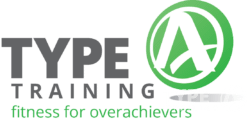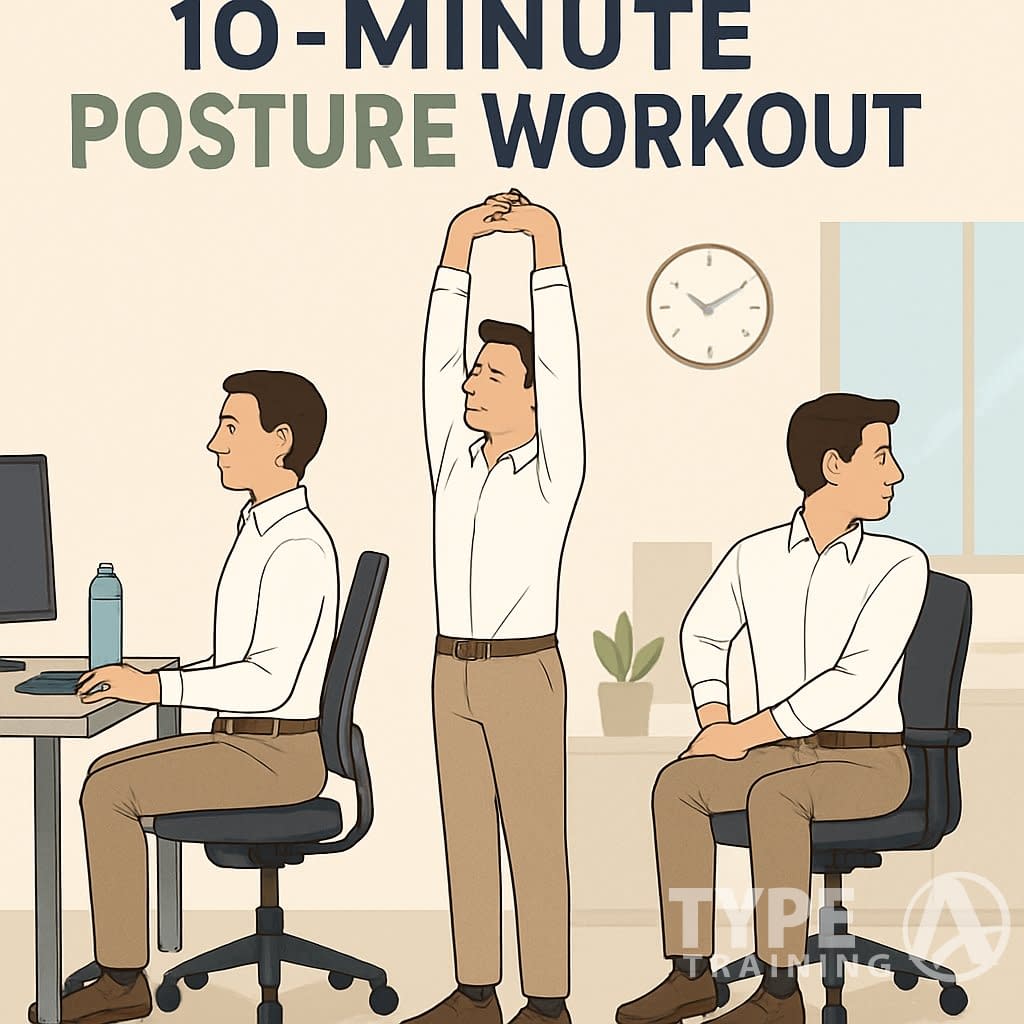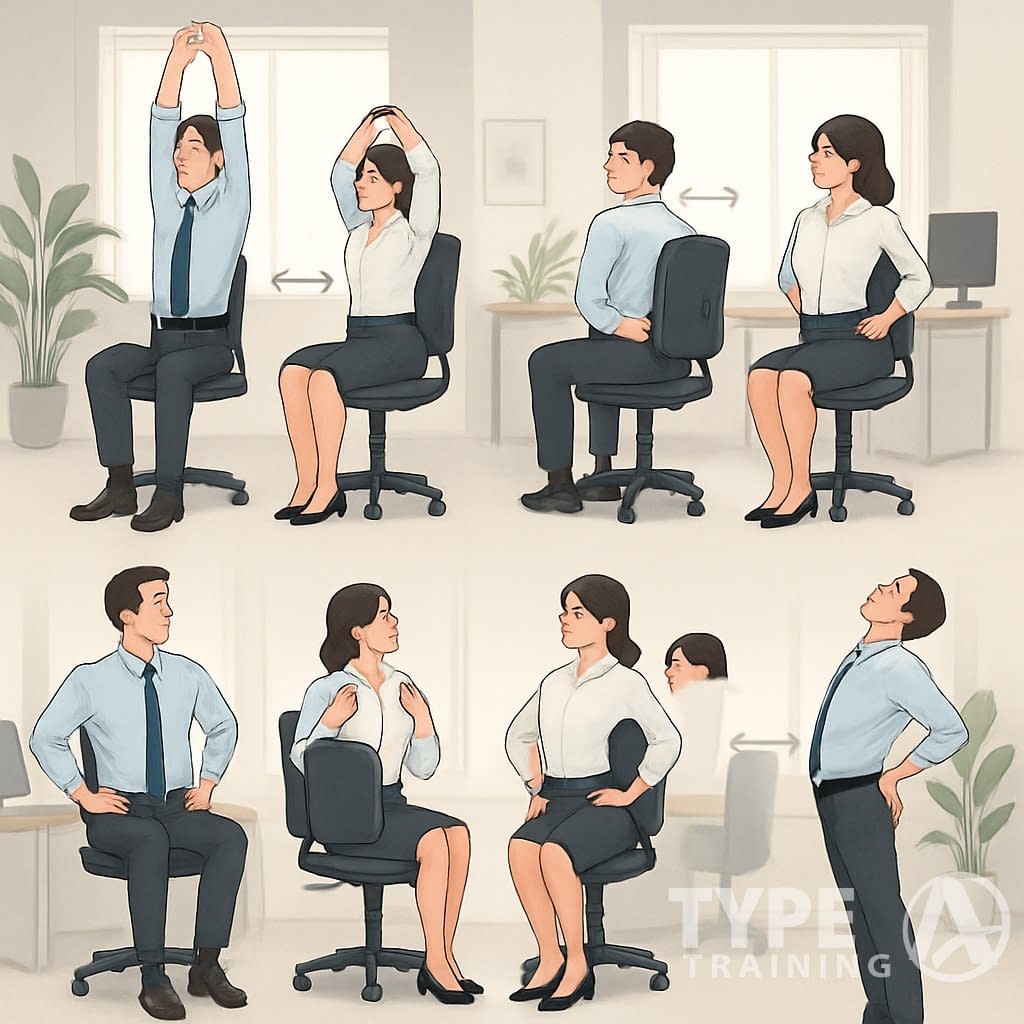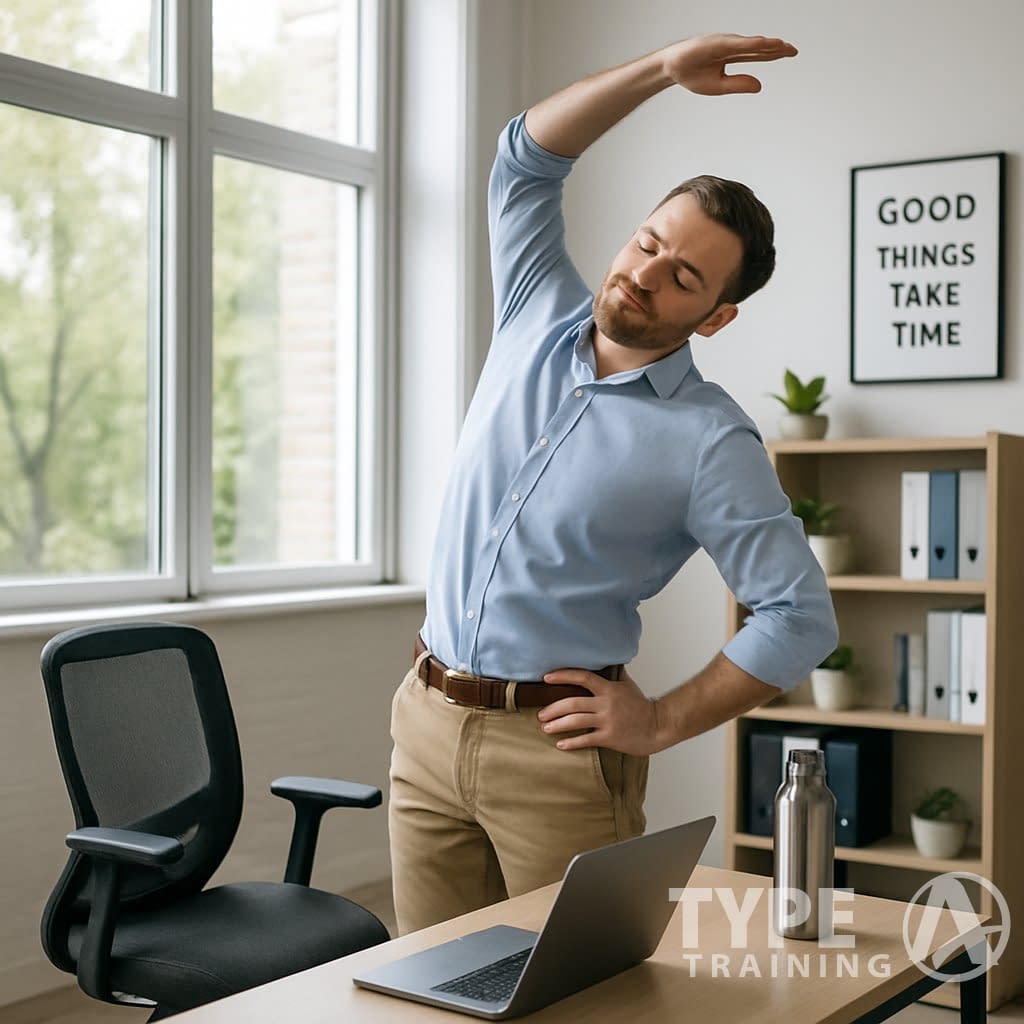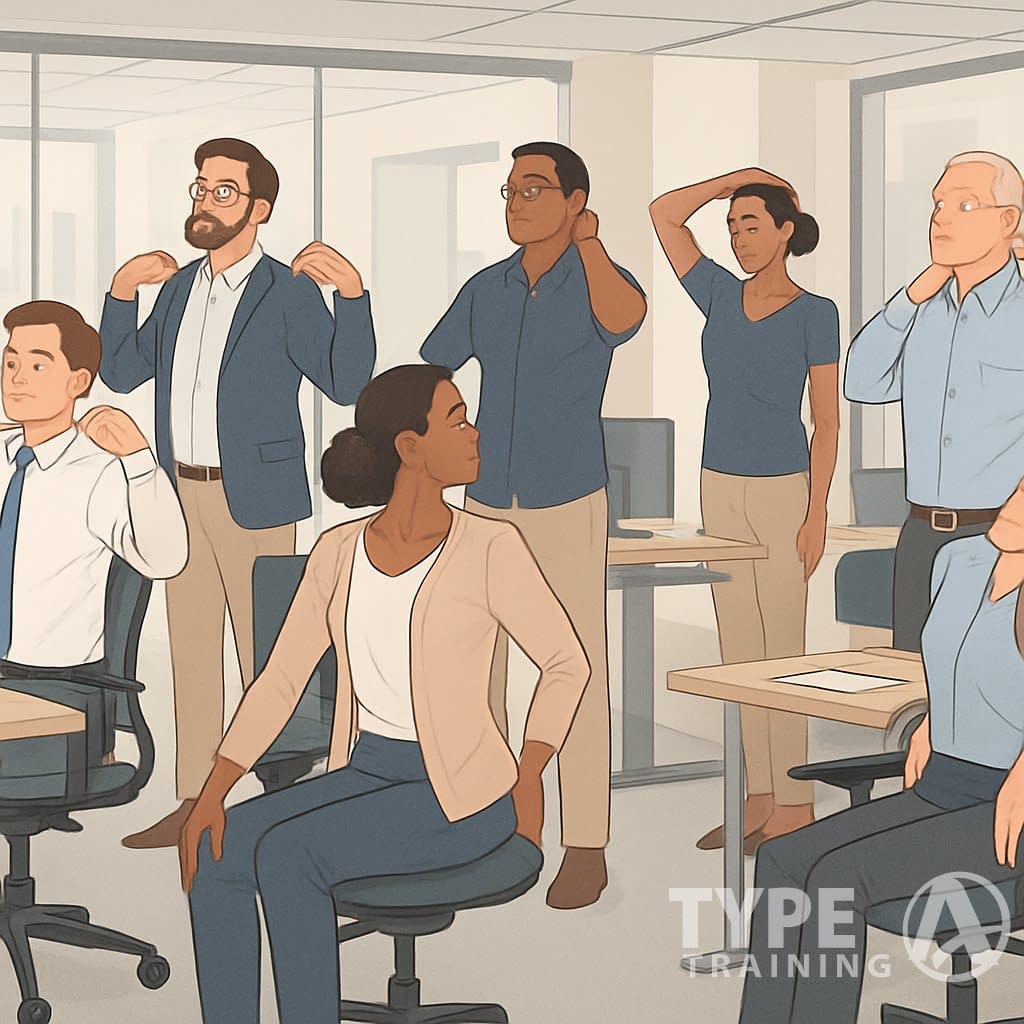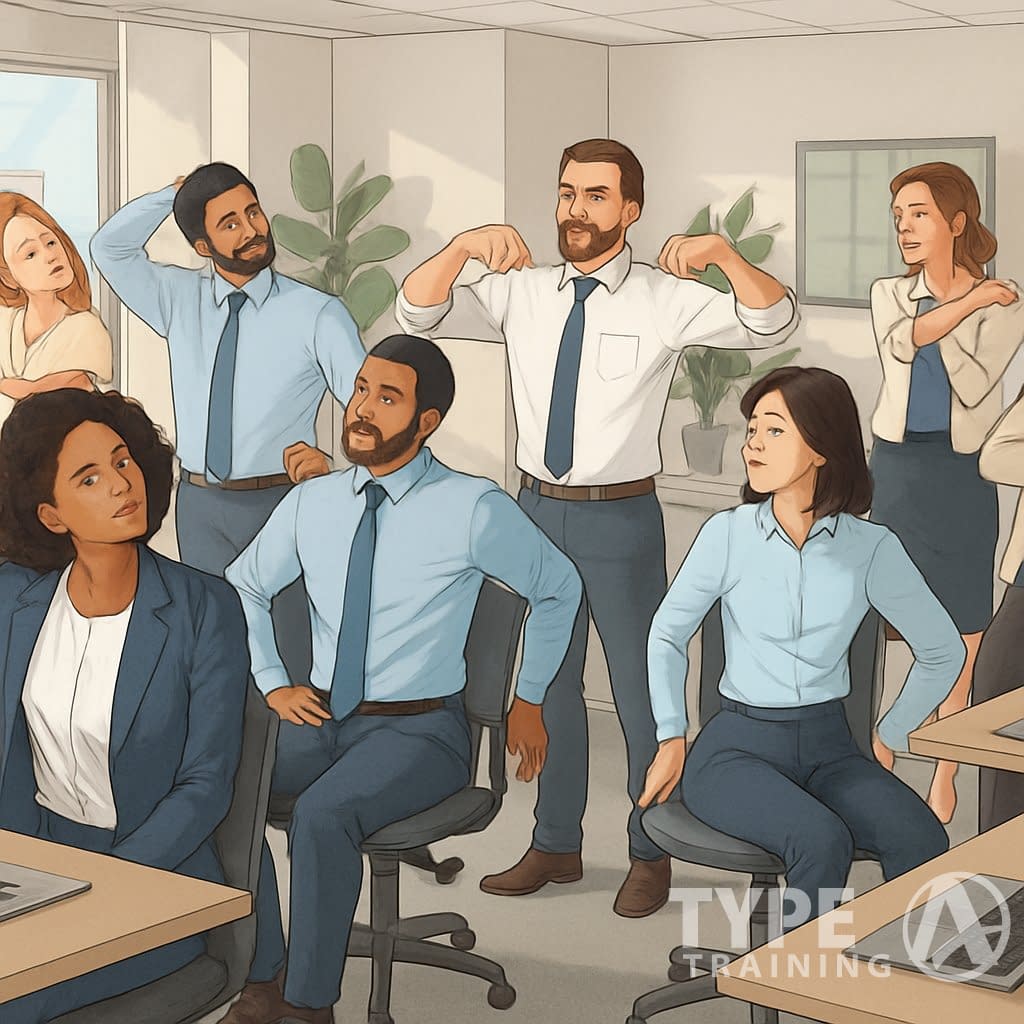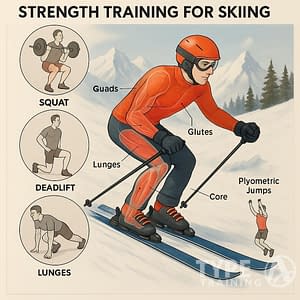Long hours at a desk can leave your shoulders tight and your back sore. Your posture starts to slip, and you might not even notice.
Maybe you don’t have time for long workouts. Still, you can take control of how your body feels during the day.
A simple 10-minute posture workout can help you sit taller, reduce stiffness, and boost your energy—all without messing up your schedule.
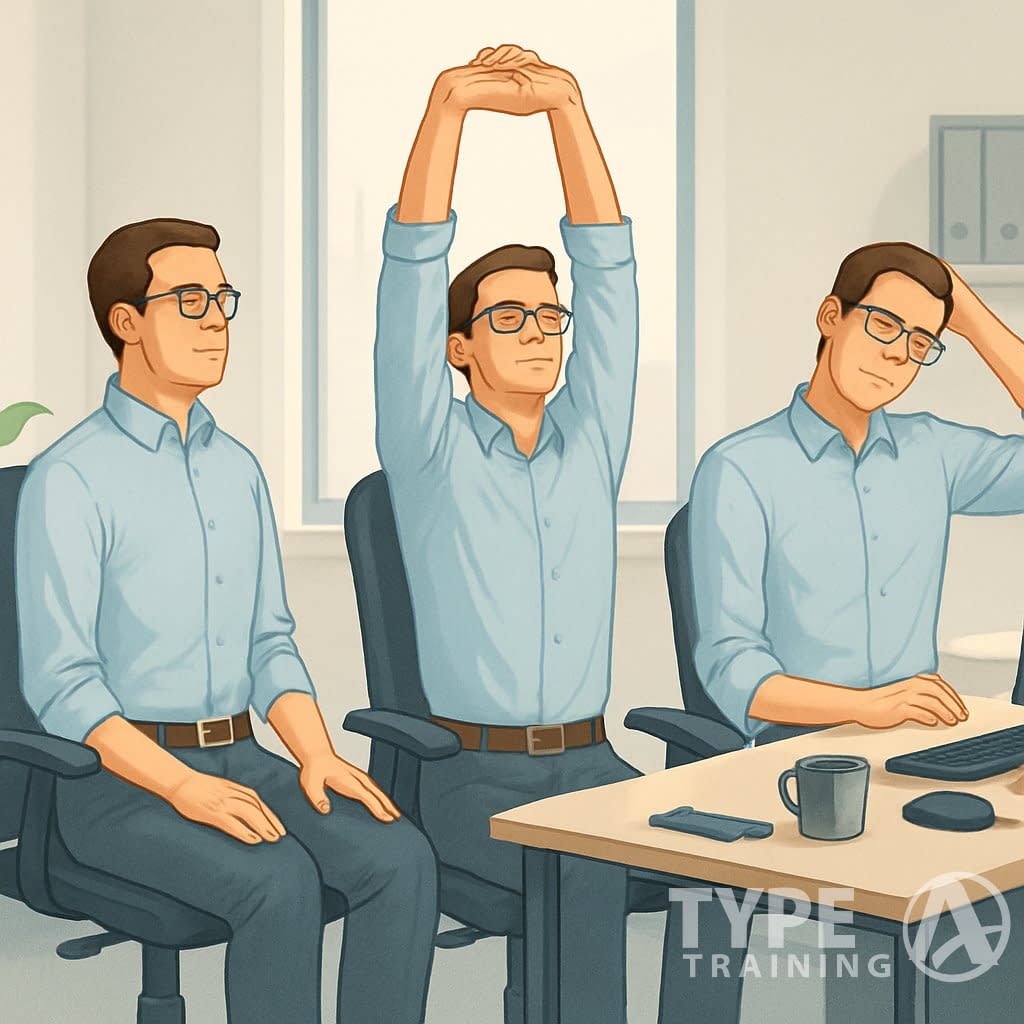
Popular posts:
You don’t need fancy gear or a gym membership. Just a few focused moves can counter the effects of sitting and support better alignment.
These exercises fit into a lunch break, between meetings, or even right at your desk. They’re practical, even if your calendar is packed.
Key Takeaways
- Good posture supports comfort, focus, and long-term health
- A 10-minute routine can fit into any busy schedule
- Simple exercises help reduce stiffness and improve alignment
Why Posture Matters for Busy Professionals
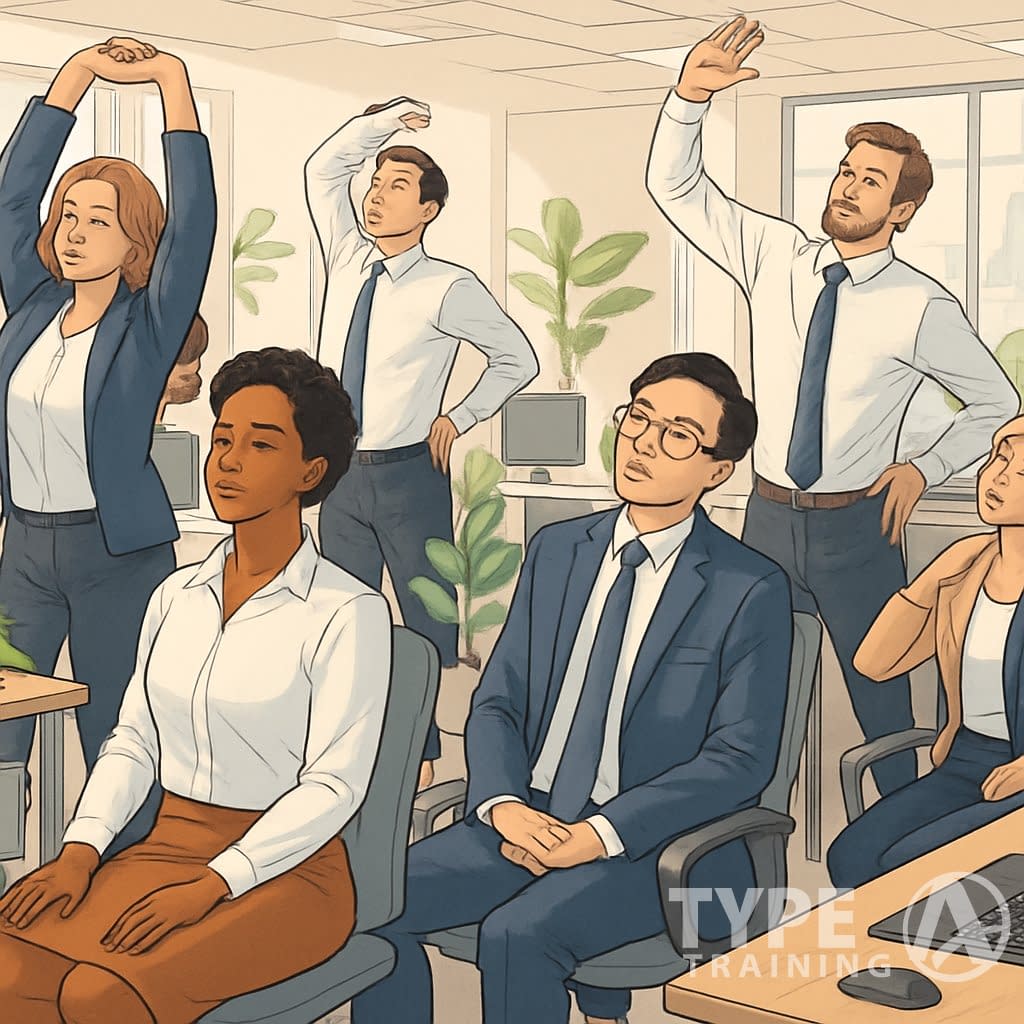
Good posture shapes how well you focus and how your body feels during long work hours. It also impacts your energy and ability to stay productive.
Impact of Poor Posture on Productivity
If you sit or stand with poor posture, your body works harder than it should. Slouching squeezes your lungs and limits oxygen flow, which can leave you tired.
Less oxygen means less focus. Your thinking slows down, and you might feel foggier.
Tension headaches and stiff shoulders or neck are common, too. These discomforts pull your attention away from work and can really lower your efficiency.
You may find it hard to stay engaged for long. Small aches build up, forcing you to shift around or take unplanned breaks.
Common Posture Problems in Desk Jobs
Desk jobs often lead to a few predictable posture issues. The big one is forward head posture, where your head leans toward the screen.
This puts extra strain on your neck and upper back. It’s not great.
Another common problem is rounded shoulders, usually from hunching over a keyboard. That tightens your chest and weakens your upper back.
Lower back pain also shows up a lot. Sitting without lumbar support leads to a slouched spine, which stresses your lower vertebrae.
Long-Term Health Consequences
Poor posture isn’t just a short-term annoyance. Over time, it can cause lasting health problems.
Chronic back and neck pain often develop when your muscles and joints stay under constant strain. Reduced flexibility and mobility can creep in, making everyday movements tougher as you get older.
Weak core and back muscles from years of slouching might even mess with your balance. In some cases, poor posture raises the risk of herniated discs or nerve compression.
The 10-Minute Posture Workout Routine
You can make a real difference in just 10 minutes by focusing on mobility, core strength, and upper back activation. These areas work together to reduce stiffness and support your spine.
Essential Warm-Up Movements
Start with movements that loosen tight areas and prep your body for exercise. A quick warm-up helps you move better and lowers the chance of strain.
Recommended warm-up moves:
- Neck rolls: Slowly roll your head side to side to release tension.
- Shoulder circles: Rotate your shoulders forward and backward for 10 reps each.
- Cat-Cow stretch: Alternate arching and rounding your back while on hands and knees.
- Standing forward fold: Gently stretch your hamstrings and spine.
These light movements get blood flowing to your muscles and joints. They also make it easier to sit or stand tall without forcing it.
Spend about 2 minutes here, then move on.
Core Strengthening Exercises
Your core stabilizes your spine and keeps you upright. If it’s weak, you end up slouching or dealing with back discomfort.
Key exercises to include:
- Plank hold: Keep your body in a straight line for 20–30 seconds.
- Dead bug: Lie on your back, extend opposite arm and leg, then switch sides.
- Glute bridge: Lift your hips off the floor to strengthen your lower back and glutes.
Aim for 8–12 reps of each exercise or hold positions for short intervals. Go slow and controlled.
Upper Back and Shoulder Activations
Tight chest muscles and weak upper back muscles cause rounded shoulders. Targeting this area helps you open your chest and pull your shoulders back.
Effective activation drills:
- Cobra pose: Lie face down, press through your hands, and lift your chest.
- Over-and-backs: Use a towel or band, moving it overhead and behind your back.
- Wall slides: Stand with your back against a wall and slide arms upward.
Do 8–15 reps of each move, nice and steady. These exercises strengthen your mid-back and shoulder stabilizers.
Step-By-Step Exercise Breakdown
You can improve posture fast by focusing on stretches, alignment drills, and mobility moves. Go for control and good form, not speed.
Seated Stretch Techniques
Sitting for long stretches makes your hips and shoulders tight. A seated stretch routine helps release tension—no need to leave your chair.
Start with a seated spinal twist. Sit tall, place your right hand on the back of your chair, and gently rotate your torso. Hold for 15–20 seconds per side.
Next, try a seated chest opener. Interlace your fingers behind your head, bring elbows wide, and lift your chest a bit.
For hips, cross your right ankle over your left knee and hinge forward slightly, keeping your back straight. Hold briefly, then switch sides.
These stretches should feel good—not painful. Two or three rounds is plenty to shake off stiffness.
Standing Alignment Drills
Standing drills help you practice correct posture and engage key muscles. Place your feet hip-width apart and stand tall with your weight evenly balanced.
Try a wall alignment check: stand with your back against a wall, heels 2–3 inches away, and touch your head, shoulders, and hips to the wall.
Add a shoulder blade squeeze. With arms at your sides, gently pull shoulder blades back and down, holding for 5 seconds. Repeat 8–10 times.
Finish with a mini squat hold. Lower into a quarter squat, keep your chest up, and hold for 10–15 seconds.
Desk-Friendly Mobility Moves
Mobility exercises at your desk keep your joints happy and reduce stiffness. Start with neck rotations, slowly turning your head side to side.
Follow with shoulder rolls. Lift shoulders up, back, and down in a circle for 8–10 reps, then reverse.
Do a thoracic extension by placing your hands behind your head and gently arching your upper back over the backrest. Hold for 5–10 seconds.
End with wrist circles to chase off tension from typing. Rotate wrists both ways for a few reps.
These moves are quick, subtle, and actually help keep your body aligned during the workday.
Integrating the Workout Into Your Workday
You can sneak a posture workout into your schedule without messing up your flow. The trick is to use short breaks, pick practical times, and make the habit easy to remember.
Quick Routines for Breaks
Short breaks are perfect for resetting your posture. Just a few minutes of movement can shake off stiffness and help your neck, shoulders, and back.
You don’t need a gym or special clothes. A sturdy chair, desk edge, or open floor space is enough.
For example:
- Desk push-ups: 10–12 reps
- Chair squats: 12–15 reps
- Seated twists: 8–10 each side
These take less than 3 minutes. You can repeat them during the day or combine a couple for a full 10-minute session.
Keep it steady and don’t rush. The goal is to wake up your muscles, not wear yourself out.
Scheduling Tips for Consistency
Sticking to predictable times makes it way easier to keep up. Mid-morning, mid-afternoon, and late afternoon usually work best.
Try starting with two set times per week. Build up to daily if you feel like it.
A simple weekly plan could look like:
| Time of Day | Duration | Focus Area |
|---|---|---|
| 10:30 AM | 5 min | Upper body reset |
| 2:30 PM | 5 min | Core and posture |
| 4:00 PM | 10 min | Full routine |
Consistency wins over intensity. Linking your workout to existing habits—like after a meeting or before logging off—makes skipping less likely.
Tools and Reminders for Habit Building
A timer on your phone, a calendar alert, or a smartwatch buzz can keep you on track. If you like visual cues, toss a resistance band or water bottle on your desk as a reminder.
Tracking your progress helps, too. A small checklist or digital tracker shows your streak.
Even jotting “10 min done” on a sticky note can keep you honest. If motivation dips, pair your workout with something you like—maybe a short podcast or your favorite song.
Supporting Healthy Posture Beyond Exercise
Good posture isn’t just about stretching and strengthening. How you set up your workspace and manage daily habits matters, too.
Little changes in how you sit, move, and rest can really reduce strain on your body. It makes staying aligned during the day a lot easier.
Optimal Desk Ergonomics
Your desk setup has a big impact on how your spine and joints feel after hours of work. If your chair or screen isn’t adjusted right, your head might drift forward, your shoulders round, and your hips get tight.
Start with your chair. Keep your feet flat on the floor and your knees bent at about 90 degrees.
Make sure your hips sit just a bit higher than your knees. Grab a chair with lumbar support, or just tuck a small cushion behind your lower back.
Set your monitor so the top edge lines up with or sits just below your eye level. Keep it about an arm’s length away so you’re not tempted to lean forward.
Place your keyboard and mouse close enough that your elbows rest at your sides, bent at roughly 90 degrees.
Here’s a quick reference:
| Component | Position Recommendation |
|---|---|
| Chair Height | Feet flat, knees at 90° |
| Screen Height | Top at eye level |
| Screen Distance | About arm’s length |
| Keyboard/Mouse | Elbows at 90°, close to body |
These tweaks help you keep a neutral spine and take pressure off your joints.
Lifestyle Adjustments for Lasting Results
Even with a great setup, sitting for hours without moving will tighten up your muscles. Try to get up, stretch, or walk for a minute every 45 to 60 minutes.
Short breaks keep your blood flowing and help your hips, shoulders, and neck stay loose.
Think about how you carry things, too. Use both straps for backpacks, or switch sides if you’re carrying a bag on one shoulder.
This keeps your muscles balanced and avoids putting too much stress on one side.
Your sleep setup matters more than you might think. Pick a medium-firm mattress and use a pillow that supports your neck’s natural curve.
Sleeping on your back or side with good support lets your spine recover from the day.
Moving outside of work hours is just as important. Walking, stretching, or a bit of yoga keeps you mobile and makes posture work easier.
Mix in regular breaks, balanced carrying, and supportive rest to set yourself up for better posture.
Book Your Posture Assessment & Get a Personalized Program
Frequently Asked Questions
You can make a real difference in your posture with short daily sessions. Focus on upper back strengthening, stretching tight spots, and tuning in to how your body lines up.
You don’t need fancy equipment, and most routines work for all fitness levels—even seniors.
What are the best exercises for correcting posture that can be done in under 10 minutes?
Go for moves that open your chest and build upper back strength. Wall angels, standing rows with resistance bands, and shoulder blade squeezes are solid choices.
Add in chest and hip flexor stretches to keep things balanced.
Can upper back exercises be effectively performed at home without equipment?
Absolutely. You can hit your upper back with just your bodyweight.
Try prone Y-T-W holds, reverse snow angels, or wall slides. Throw in resistance bands if you want a bit more challenge.
What is a quick posture-improving routine suitable for seniors?
Gentle standing exercises are great for seniors. Shoulder rolls, seated spinal twists, and wall push-ups all help with mobility and don’t strain your joints.
Even short daily walks and some light stretching make a difference.
How can one achieve lasting posture improvement through short daily workouts?
Doing a little every day matters more than marathon sessions. Ten minutes daily can wake up weak muscles and help your body remember better alignment.
Mix in mindful sitting and standing to keep your progress going.
Are there any quick posture exercises that can be integrated into a gym routine?
Sure! You can sneak in posture moves between sets. Face pulls, cable rows, and overhead carries fit right in with strength training.
Even just a set or two of these can help your posture feel stronger and more supported.
What are some effective physical therapy exercises for posture that can be done briefly?
Physical therapists usually recommend chin tucks, scapular retractions, and thoracic extensions. These moves hit the spots that tend to get weak when posture slips.
Just a few minutes a day can make a difference. They help your spine stay happy and might even ease some of that stubborn tension.
